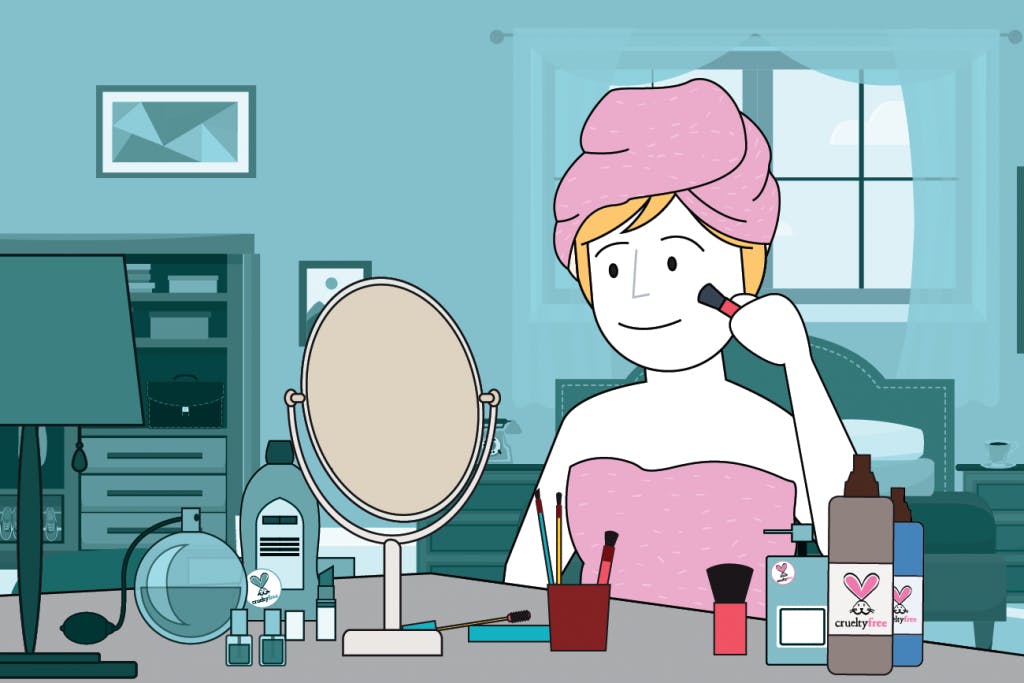Back in December, I wrote about how excited I was that another big-name cosmetics brand—CoverGirl—was going cruelty-free. And while this might increase challenges for other cruelty-free beauty brands in the beauty space, it also poses an opportunity to widen the playing field. And what’s more, it opens up a lot of opportunities for those companies already in the space. How so? This Forbes article gives a good overview of why competition is good for companies, but here are a few of my favorite reasons:
- When there’s more competition, it helps companies keep moving. In other words, companies can’t be stagnant, and they can’t rest on their CPG laurels. There has to be a regular cycle of innovation if a company is going to keep up with new products and brands entering the market.
- When there’s competition, you know your business like never before. If a company finds itself suddenly up against a new brand or product, its best chance of success is understanding how it can differentiate itself from others. And to do that, a company or brand has to know its strengths, its weaknesses, and everything in between.
- When there is competition, it can force companies to look at rivals in new ways. When a brand embraces the competition, there is opportunity there to create new alliances. As the article states, “Exchange technology and tools, expand the overall market, cross promote each other’s products and collaborate on novel research to educate consumers.” You just never know what might come of it.
Beyond cruelty-free
But going cruelty-free, I quickly realized, was just the tip of the Consumer Iceberg. Sure, not testing beauty products on animals is excellent, and important. But consumers want their beauty products to take it a step further and be as naked as the skin they’re covering up with products. (How’s that for ironic?) And it’s not really a big surprise—there has long been a consumer focus on health and wellness, and the CPG industry has seen an increase in clean eating, and demand for clean food products. It makes sense that beauty products would follow suit. As Tata Harper, founder of a natural beauty brand of the same name, said in a New York Times article, “Beauty follows food because we use a lot of the same ingredients. If they’re good to ingest, they’re typically great to apply topically.”
A 2018 Nielsen report noted that “It’s no longer enough for brands to simply say they’re natural; they have to authentically prove it.” While they’re talking directly about ingredients, I think the sentiment can actually be expanded to many aspects of health and beauty products. Beauty consumers are increasingly clamoring for their preferred products to be transparent not only about what goes into making their favorite eyeliner or facial scrub (and increasingly want those ingredients to be natural, if estimates of an 11% annual growth rate are to be believed), but also about how they’re receiving the product (packaging) and in some cases, what the entire supply chain for that product looks like, from ingredient cultivation to delivery. But there’s one issue hindering many companies from achieving full transparency as they might hope—technology.
“The rise of technology and access to information on demand has shifted control to the individual. Newly empowered consumers, now more knowledgeable and vocal than ever before, are adding to the erosion of trust that fostered the current demand for transparency,” according to beauty industry professionals during a presentation of Capstone research from the Fashion Institute of Technology’s Master of Professional Studies program in Cosmetics and Fragrance Marketing and Management last June.
There’s rampant mistrust in the beauty industry, and beauty companies can’t afford to ignore that, and need to be more transparent if they want to succeed and survive. Beauty products are a very personal thing, and with technology at our fingertips, it’s easier than ever for consumers to instantly find the information they’re looking for about their favorite brands. What’s more, companies need to be clear about that information as well. (As the New York Times article notes, for example, that there needs to be more clarity around the term vegan. As it stands, the FDA lacks guidelines that companies could point back to.) And if they can’t easily find it, they have the mechanisms and means to contact those companies and express their displeasure in myriad ways–reviews, social media, you name it. Some companies might see this as throwing a wrench in their plans to achieving transparency, but like the widening of competition in the category, I see it as an opportunity.
It’s a chance for beauty companies to more fully understand their own processes.
It’s a chance for beauty companies to ensure that they’re behaving ethically, and in a way that would stand up to scrutiny.
But most important, it’s a chance for beauty companies to engage with consumers, and push through the opaque areas and give them the full transparency they seek.


